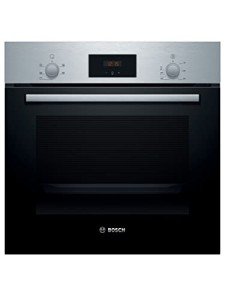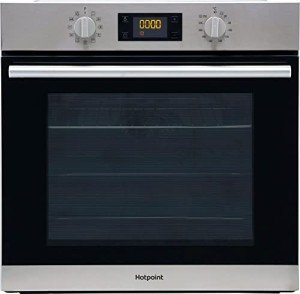what-is-a-single-oven0784
what-is-a-single-oven0784
You’ll Never Be Able To Figure Out This Oven For Kitchen’s Benefits
Choosing the Right Oven for Your Kitchen: A Comprehensive Guide
Ovens have been a foundation of culinary ventures for centuries, supplying a vital device for both amateur cooks and professional chefs alike. As modern kitchen areas evolve, so too do the types of ovens available, each designed to fulfill the diverse requirements of cooking lovers. The following guide supplies an in-depth summary of various oven types, their functions, and considerations to keep in mind when picking the ideal oven for your kitchen.
Types of Ovens
When considering an oven for your kitchen, it’s essential to comprehend the different types available. Each kind of oven has special qualities that can affect cooking methods and general kitchen performance.

1. Standard Ovens
Conventional ovens are the most basic type, typically found in homes around the world. They normally use either gas or electric power and use a straightforward cooking method.
- Gas Ovens: Utilize gas or lp, providing instantaneous heat and outstanding temperature control.
- Electric Ovens: Use electric coils or a heating aspect, frequently offering more even heat circulation.
2. Convection Ovens
Convection ovens are designed with a built-in fan that flows hot air around the food, leading to faster cooking times and more even results.
- Benefits:
- Reduced cooking times (as much as 25% faster)
- Even baking and browning
- Downsides:
- May need adjustments to recipes (lower temperature or much shorter time)
3. Wall Ovens
Wall ovens are a popular option in contemporary kitchens, as they can be set up at eye level, saving counter area and increasing ease of access.
- Single Wall Ovens: Ideal for smaller kitchens, appropriate for daily cooking.
- Double Wall Ovens: Increase capacity for large meals and numerous dishes.
4. Range Ovens
Range ovens combine both a cooking range (with burners) and an Oven For Kitchen, providing a compact solution for kitchens with minimal area.
- Freestanding Ranges: Standalone units that can suit any kitchen layout.
- Slide-in Ranges: Designed to fit comfortably between cabinets for a more integrated appearance.
5. Steam Ovens
Steam ovens utilize steam instead of dry heat, preserving moisture and nutrients in food.
- Advantages:
- Healthier cooking option
- Ideal for baking bread and cooking vegetables
- Considerations:
- May require additional steps for specific dishes
Secret Features to Consider
When selecting an oven, consider the following functions that can boost cooking experiences:
| Feature | Description |
|---|---|
| Size | Guarantee it fits your kitchen area and satisfies your cooking requires. |
| Self-Cleaning | Makes upkeep easier, eliminating the need for manual scrubbing. |
| Smart Technology | Ovens with Wi-Fi connectivity can simplify cooking through apps. |
| Temperature Range | A broader range can enhance cooking flexibility. |
| Safety Features | Features such as automobile shut-off can improve kitchen safety. |
Tips for Choosing the Right Oven
Picking the right oven can in some cases be a daunting job. Here are several ideas to streamline the process:
-
Identify Your Cooking Habits: Consider how typically you cook and the kinds of meals you prepare. For instance, passionate bakers might choose a convection oven for even baking, while those who cook roasts may lean towards a conventional oven.
-
Procedure Your Space: Before buying, determine the location where the oven will be placed to guarantee it fits conveniently with your kitchen design.
-
Consider Your Budget: Ovens range extensively in price. It is essential to set a budget plan and think about the long-lasting value of the appliance.
-
Read Reviews: Online reviews can provide insight into a design’s efficiency and dependability over time.
-
Examine Energy Ratings: Energy-efficient designs can save you cash on energy expenses in the long run.
Maintenance and Care
To optimize the life expectancy of your oven, appropriate maintenance is essential. Follow these easy actions:
- Regular Cleaning: Make cleaning a practice after each usage, and utilize self-cleaning features when available.
- Check Seals: Ensure that the door seals tightly; this avoids heat loss throughout cooking.
- Calibration: Periodically inspect the oven temperature level for precision. An oven thermometer can assist with this.
- Expert Servicing: Schedule regular maintenance contact an expert to guarantee the device operates efficiently.
FAQs
What is the best kind of oven for a small kitchen?
For small kitchen areas, wall ovens or compact range ovens are outstanding options as they take up less space and can be installed to fit into offered cabinets.

How do I keep a gas oven?
Frequently inspect the burners for clogs and make sure that the oven’s interior is cleaned to prevent accumulation from spills and splatters.
Can I bake and broil in the exact same oven?
Yes, many contemporary ovens enable for both functions. Check the user manual for specific guidelines on running your oven.
What should I do if my oven isn’t heating up correctly?
Initially, check if it’s properly plugged in or if the gas is flowing. If issues continue, speak with a specialist to identify prospective problems.
Is it worth investing in a smart oven?
If cooking benefit and the newest technology interest you, purchasing a smart oven can be beneficial, as they offer a variety of improved cooking functions.
Picking the right oven for your kitchen is essential to both the functionality and satisfaction of your cooking experience. By considering the various types of ovens, essential functions, and upkeep tips, consumers can make an educated decision that satisfies their culinary needs and preferences. Whether you are a casual cook or an enthusiast, the best oven can substantially elevate your culinary adventures.


